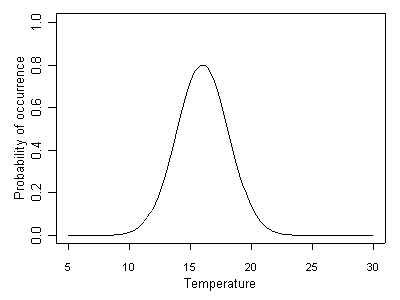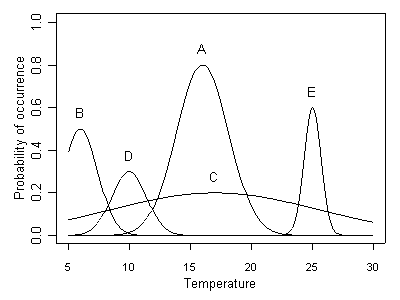PECBO Appendix Introduction: Theory
Theory
Ecological niche theory suggests that individual species often are distributed unimodally along environmental gradients [e.g., see Whittaker (1956)]. This type of distribution is thought to arise over evolutionary time as species specialize to exploit certain habitat conditions or resources through the process of adaptive radiation (niche diversification). Thus, the abundance of a species or the probability of observing that species should approximate a Gaussian distribution over different environmental gradients (Figure 1).

For a given pool of species, different distributions are expected (Figure 2). As a result, different assemblages of species are expected at different points along that gradient. Based on the responses shown in Figure 2, one might expect to find species B, C, and D in a stream where the water temperature is 7° C, but species C and E in a stream where the water temperature is 25° C. This change in the taxonomic composition of the assemblage across environmental gradients underlies the idea of biological inferences. That is, if we can construct species-environment relationships for different environmental gradients, we should be able to infer conditions at new sites based only on biological data.

References
- Whittaker RH (1956) Vegetation of the Great Smoky Mountains. Ecological Monographs 26:1-80.
